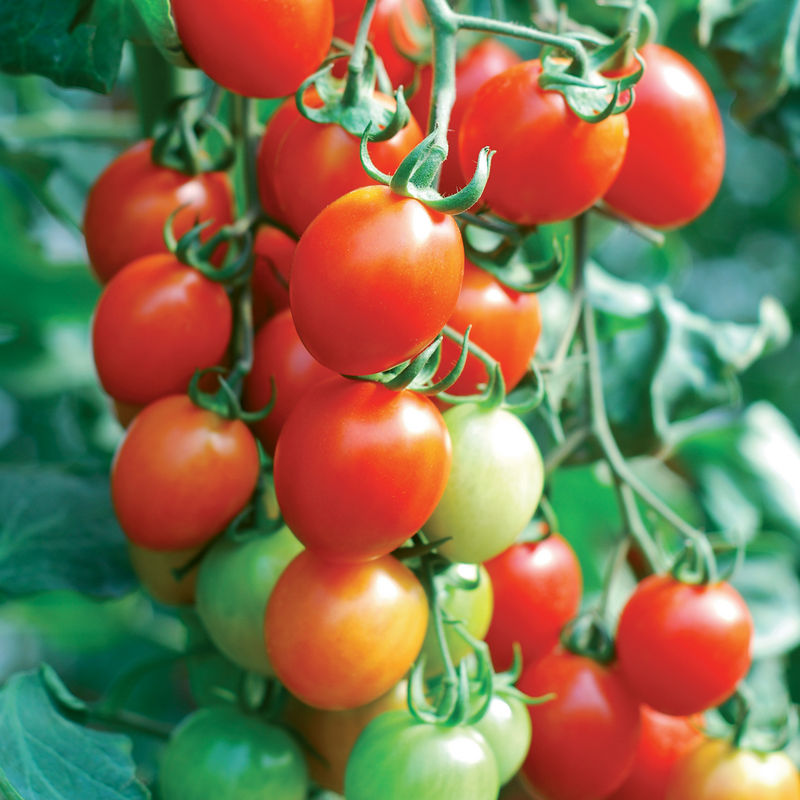
Here in the Lowcountry, it’s time to start the second tomato crop of the season. And whether you have never grown your own or didn’t get the harvest you’d hoped for this summer, a planting primer might come in handy:
Select: Pick disease-resistant varieties appropriately sized for your space. (Click here for more disease info from Clemson Extension, including a list of disease resistance codes found on plant tags.) If you’re, say, planting a patio container, a determinate variety (which might be labeled with the abbreviation “DET”) is ideal, as it has a bush-like, more compact growth habit that only reaches a specific height. These tomatoes set their fruit at the end of the stem, and all will ripen at once. Indeterminate (abbreviated “IND” on tags) tomatoes produce on vining stems that will continue to fruit until frost.
Site: Tomatoes need at least six hours of full sun. They should be planted in well-draining, nutrient-rich soil with a pH of 6.0-6.5. Before planting, amend soil with compost.
Plant: Place tomato transplants into the soil deep enough that only the top three sets of leaves are exposed. This will help them grow well-rooted foundations.
Mulch: Cover soil with two to three inches of pine straw, leaves, or grass clippings to retain consistent moisture. Tomatoes do not like extreme moisture fluctuations.
Water: Use drip irrigation, as overhead methods not only waste water but increase chance of disease.
Trellis: Employ a tomato cage (the Ultomato can be dismantled for easy storage) to keep branches off the ground and encourage air circulation.
Feed: Following the package directions, apply an organic fertilizer such as Espoma Tomato-tone twice a month.
Harvest: Pick the fruit when it’s firm and vibrantly colored (whether red, yellow, orange, or another hue).
Great tomato varieties for Lowcountry growing:
‘Sungold’: (Indeterminate) Super-sweet, bright-yellow cherry tomato
‘San Marzano’: (Indeterminate) A vigorous heirloom plum tomato with low acidity, low seed count, and easy-to-remove skin
‘Patio’: (Determinate) Perfect for a patio, with compact, vigorous growth
‘Beefmaster’: (Indeterminate) The classic slicing tomato, extra large and flavorful
You can propagate a new tomato plant from an indeterminate variety you (or a friend!) already have growing! Here’s how:
1. Using a pair of clean, sharp snips, clip off an eight-inch piece of a healthy tomato stem.
2. Remove any blossoms or fruit, as you will want the plant to put its energy into growing roots, not fruit.
3. Fill a glass with fresh water. Remove any leaves from the tomato stem that will fall below the waterline, and place stem in the glass.
4. Position glass on a sunlit windowsill. In about 14 days, roots will emerge.
5. When the cutting has developed a healthy root system, plant it in a four-inch pot filled with nutrient-rich potting mix.
6. When the roots have filled the pot, transplant to your garden.
Tip
Whether you are gathering from the garden or have been the lucky recipient of cut flowers, take time to prep the blooms so their beauty will last. Always use clean, sharp snips to make fresh 45-degree cuts on stems while submerged in water. The exposed surface area will increase nutrient uptake. For at least 30 minutes before arranging, allow your stems to soak in floral preservative—you can make your own by combining two teaspoons sugar, one capful household bleach, and two teaspoons lemon or lime juice with two quarts of lukewarm water. Fill a vase with fresh preservative, and change it every two to three days (recut stems, as well).